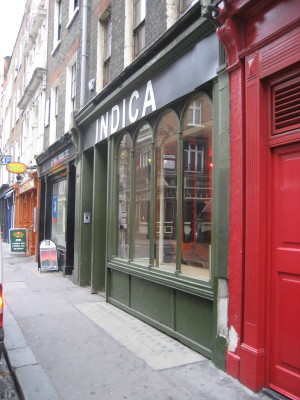You had to be there..

How do you define what is of historical value?, Is it something that endures in the memory? Is it something that throws up a new and exciting way of viewing the world or society? Or is it just that which takes on a wider recognition and significance than perhaps might have been assumed at its outset?. The art world is always gauging the relative success or failure of artists, artwork and artistic genres, it seems bizarre to me that there is a website dedicated to creating an ongoing international league table of artists, but indeed there is and perhaps someone somewhere actually takes it seriously, god knows who though because no-one needs to compile a chart to tell me that Bill Viola is Real Madrid and I am Rushden & Diamonds (not even in fact!).
Every week in London three new galleries open and two close blah blah blah….we’ve heard all this before and as the handful of regular readers of this blog know I have ranted away about gallery commercialism and playing safe versus imagination and non commercialism many times, and all this scattergun musing takes me stumbling into Riflemaker becomes Indica.
Indica registers in a subtle way in the recesses of my brain as an influential art space worthy of respect but my knowledge of the space is small, being born seven years after its closure it is more part of my parents generational history than my own, I look fondly on the imagination, drive and revolutionary spirit of that generation but am always slightly turned off of engaging with the social history of the sixties because of the way that previous generation uses their time against their children, I have heard too many middle class parents of friends of mine regaling us about their weekend hippy existence, all ‘reefers’, anti Vietnam protests and university sit-ins whilst slagging of my generation for not protesting, being politically apathetic, anti-intellectual and lazy, in comparison they “changed the world”, apparently. So the Indica reincarnation in the Riflemaker Gallery was always going to carry a heavy weight of assumptions, preconceptions and a very subtle shade of ‘take it or leave it’ style sulking hostility. Okay Daddio show me what you got!.
Artists of the first Indica incarnation show original pieces alongside Riflemaker’s young artists responses, on the ground floor amongst others is Mark Boyle/The Boyle Family’s gutter, kerb and pavement recreation, the Boyle family are highly recognised in present times but in the mid-sixties they were embarking on their signature styles of production, I imagine for something to conceptually contrive imagery which was so instantly unshowy and real was a departure. Of that time presumably nobody outside of Northern Italy expected to see such a thing in a gallery and despite the intervening years it still works for me, I can step back three decades and imagine the surprise and curiosity that this may have been viewed with, unfortunately despite these observations I still feel somewhat detached from the work. Alongside this are some other works of the time and responses by current artists, Nina Jan Beir & Marie Jan Lund’s “Dance Like I do” shows them dancing side by side on adjacent television screens, I peer down at the floor and the screens and nothing much happens, just two girls dancing in their houses in a vaguely bored manner, as I bypass Mark Dagley’s blue, yellow and red dot painting and Aishleen Lester’s resin and polyester, stitched sculptures I leave the room in a vaguely bored manner reminiscent of the two Jan’s.
On the top floor Taki’s blinking lights are dwarfed by Conrad Shawcross’ four armed, slightly off centre, wheeling light throwing machine, it is the usual Shawcross stuff, clanking, whirring, buzzing and aggressively chucking its arms at me it grabs my attention but doesn’t really hold it, my attention slips from its grasp to the two wall mounted mechanical photographic flipbooks flipping the small sheets over and over, I lean against the wall and watch the two figures blurrily make part of their never ending looped journey along some unknown streets. The figures are locked in a looping moment in time, a part of their journey that has no departure and has no end and one in which the looped points of time that they inhabit are virtually unrecognisable.
Descending to the basement in the final gallery space are The Baschet Brothers homemade speakers made from sheets of shaped and folded stainless steel and aluminium alongside is Liliaine Lijn‘s framed polymer lenses dotted around sheets of perspex, the frame is lined with bulbs which blink on and off at different times casting variable shadows of the lenses and through the perspex sheets on to the wall behind. Both works are obscure and it is difficult to determine their full intention beyond the obvious, in fact pretty much all the works feel like this to me. And whilst returning upstairs to the main ground floor space and listening to the accompanying soundtrack of music of the time it occurs to me that I do not need to determine what any of the art ‘means’, it just ‘is’.
Indica’s stated intention was to just experiment, to play, test, protest or whatever else feels necessary, all in the spirit of experimentation.
Indica’s experimental programme between 1965-1967 did change art and is part of art history and in a small way London’s 20th century history, luckily Riflemaker in 2006 have shown us a little of that lost spirit of our previous generation.
Maybe my band of generation X art world can learn a lesson from history, when this particular history lesson finishes at Riflemaker sometime in January we can take up the struggle and do some experimenting ourselves, I doubt we’ll change the world but we might just make a little history of our own.

0 Comments:
Post a Comment
Subscribe to Post Comments [Atom]
<< Home